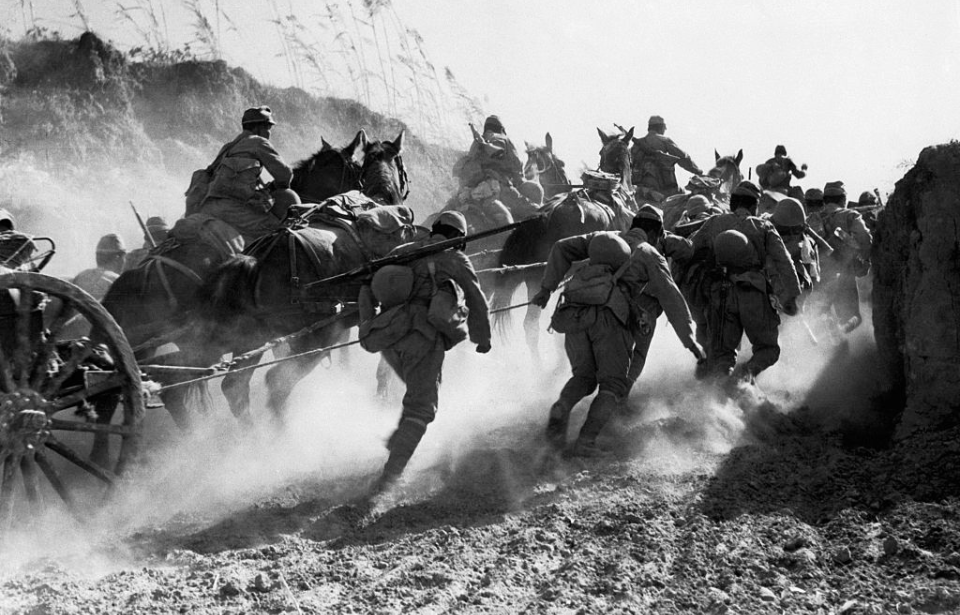The Second Sino-Japanese War was the result of escalating tensions and conflict between China and Japan that had been brewing for decades. When fighting broke out in the late 1930s, the Japanese military showed no mercy, committing war crimes that were so horrific in their casualty totals that the conflict later became known as the “Asian Holocaust.”
What led to the war, and how did it play into the wider fighting taking place in the Pacific as part of World War II?
What led to the Second Sino-Japanese War?
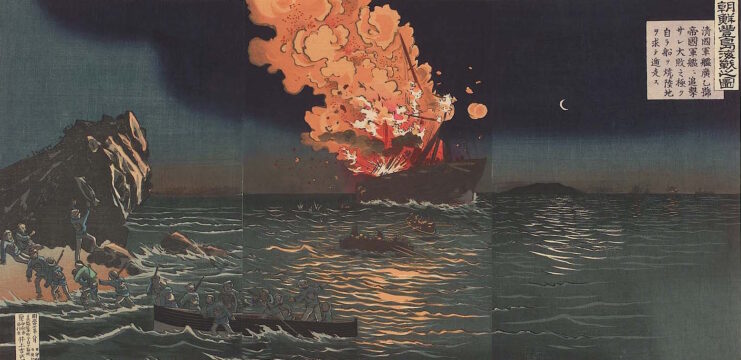
Japan’s imperial ambitions and expansionist policies played a significant role in the lead-up to the Second Sino-Japanese War. The First Sino-Japanese War (1894-95) had already seen the country’s military defeat China and establish a foothold in Korea and Taiwan. The Treaty of Shimonoseki, which came about at the end of the conflict, saw China cede Taiwan and other regions and recognize Korea’s independence.
In the early 20th century, Japan continued to strengthen its military and modernize its economy, which contrasted the turmoil in China. The collapse of the Qing Dynasty during the 1911 Revolution and the subsequent power struggles between warlords weakened the country’s ability to resist foreign incursions. Japan took advantage of this and issued the Twenty-One Demands, to greater expand its own influence over Chinese territory and resources.
Invasion of Manchuria
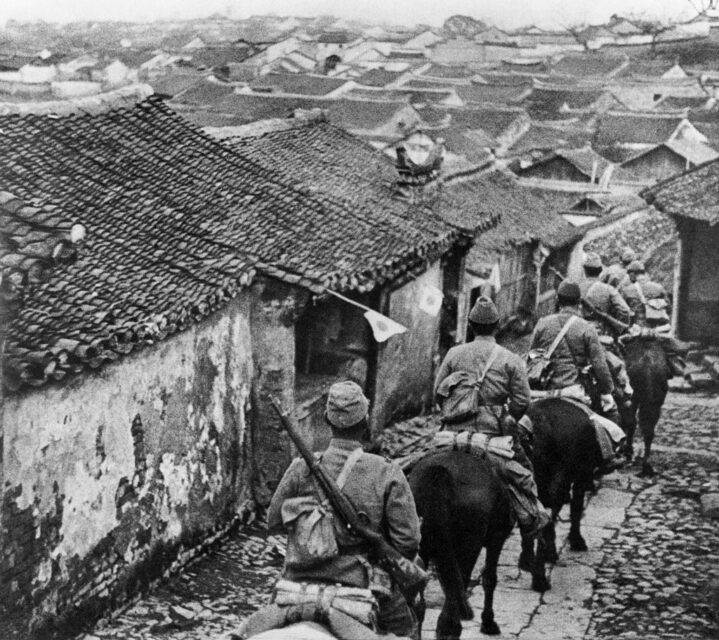
The invasion of Manchuria marked a significant escalation in Japanese aggression. The Mukden Incident on September 18, 1931, saw Japanese troops blow up a section of the South Manchuria railway and blame Chinese dissidents, serving as the catalyst. The false flag operation allowed Japan to justify its military actions as self-defense and, within months, Japanese troops had overrun Manchuria, encountering minimal resistance along the way.
Japan quickly established the puppet state of Manchukuo, with Puyi, the last emperor of the Qing Dynasty, as ruler. The League of Nations condemned the invasion and set up the Lytton Commission to investigate, and the resulting report both criticized the Japanese and called for the restoration of Chinese sovereignty in Manchuria.
Japan withdrew from the League of Nations in protest, without significant repercussions from the international community.
Launching a full-scale invasion of China
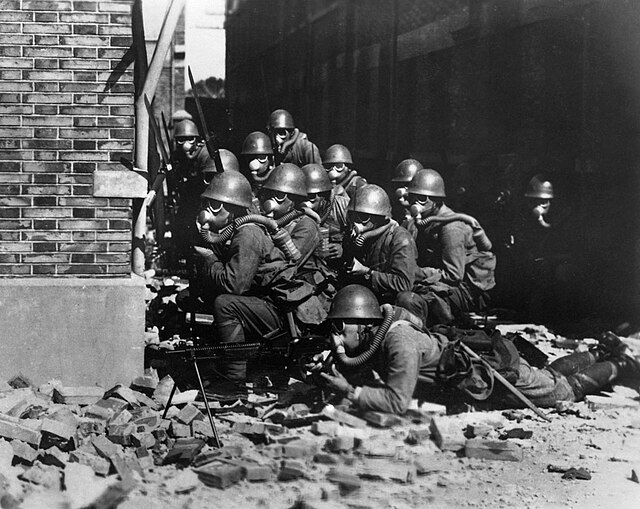
The full-scale invasion of China began in earnest in 1937, following the Marco Polo Bridge Incident on July 7. Occurring near Beijing, it quickly escalated into a broader conflict. The early stages saw Japan achieve rapid territorial gains, but the Chinese forces continued to resist. The government, led by Chiang Kai-shek, relocated to Chongqing, where it continued to coordinate military efforts.
The Battle of Shanghai in August 1937 was one of the first major confrontations of the Second Sino-Japanese War. Despite fierce resistance from the Chinese forces, the technologically superior Japanese captured the city by November.
Shanghai’s fall was followed by the capture of Nanjing that December.
Nanjing Massacre
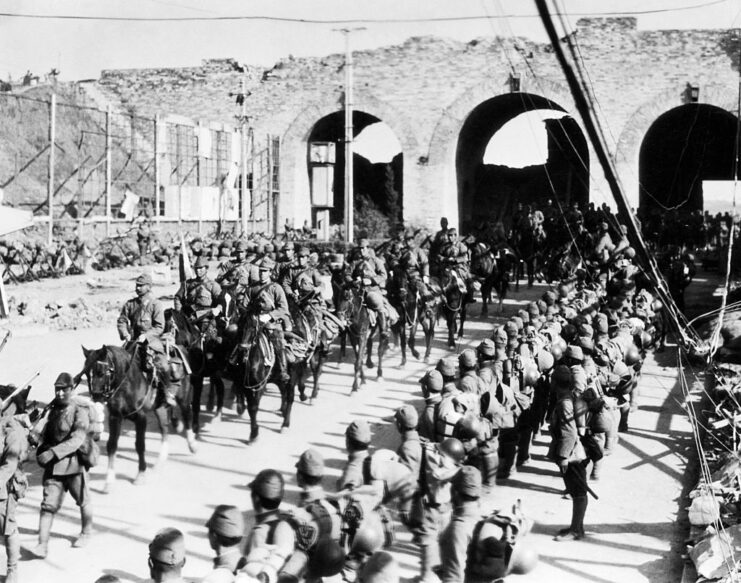
The Battle of Nanjing and the subsequent massacre remain some of the darkest chapters of the Second Sino-Japanese War. After capturing Shanghai, Japanese forces advanced toward the city, which fell on December 13, 1937, following a fierce fight that saw significant casualties on both sides.
Following Nanjing’s capture, Japanese troops embarked on a six-week campaign of terror against the city’s residents. The number of Chinese civilians and disarmed soldiers killed during this time range from 100,000 to 300,000.
The massacre included mass executions, violence against women, and looting and arson. The brutality of the Japanese shocked the international community, and it served as part of Japan’s broader strategy of instilling fear and breaking the will of the Chinese resistance. However, instead of demoralizing the Chinese, the atrocities galvanized both the Nationalist and Communist forces to continue their fight.
Chinese participants of the Second Sino-Japanese War
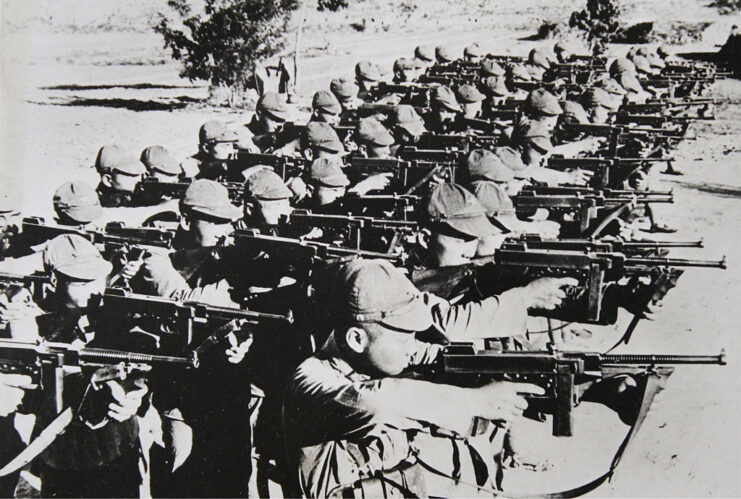
The relationship between the Chinese Communists and Nationalists during the Second Sino-Japanese War was complex. Despite their ideological differences and ongoing civil conflict, the threat posed by Japan forced the two sides to form a temporary alliance known as the Second United Front.
The Communists, led by Mao Zedong, primarily engaged in guerrilla warfare, operating from their base areas in northern China. The Eighth Route Army and the New Fourth Army, both under the command of the Communist forces, conducted sabotage operations, ambushes and raids on Japanese supply lines, and their tactics proved to be highly effective in disrupting the enemy.
Despite their cooperation against Japan, the Nationalists and Communists remained distrustful of each other. Conflict between the two wasn’t uncommon, and both sought to expand their influence and control over Chinese territory.
What happened after the Japanese attack on Pearl Harbor?
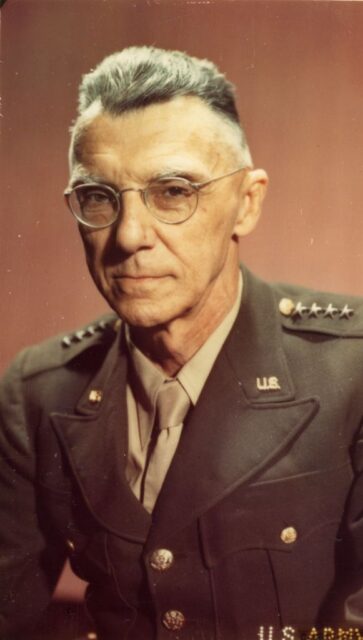
The entry of the Allies into the Second Sino-Japanese War following the attack on Pearl Harbor in December 1941 marked a turning point in the conflict. The United States, having declared war on Japan, began to provide both military and financial support to China; the Lend-Lease Act allowed the former supply the latter with arms, equipment and other resources.
US military advisors, led by Gen. Joseph Stilwell, were sent to assist the Chinese. Stilwell aimed to improve the training and organization of the Chinese Army. However, his relationship with Chiang Kai-shek was strained.
The involvement of the Allies also shifted the focus of the Pacific Theater, with engagements like the Battle of Midway and the Guadalcanal Campaign diverting Japanese resources away from China.
Operation Ichi-Go
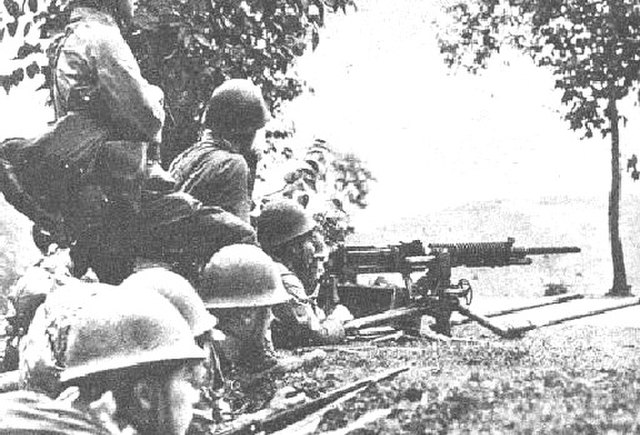
Operation Ichi-Go was launched by Japan in 1944. The largest military campaign of the Second Sino-Japanese War, it aimed to secure a land route from Japanese-occupied territories in China to French Indochina, capturing airfields used by American bombers along the way. Japan mobilized more than 500,000 soldiers, along with tanks, artillery and aircraft, to ensure the plan was executed properly.
The operation began in April 1944 and initially had success. The Japanese forces advanced through Henan and Hunan provinces, capturing several key cities and airfields. The Chinese Nationalist forces, plagued by poor coordination and inadequate supplies, struggled to mount an effective defense. However, the sheer size of China and its difficult terrain eventually slowed the Japanese advance.
How did the Second Sino-Japanese War end?
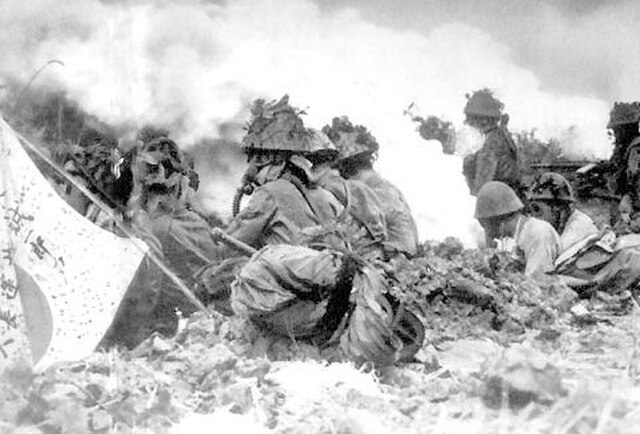
The Second Sino-Japanese War came to an end in 1945, following the conclusion of World War II. The dropping of the atomic bombs on Hiroshima and Nagasaki, coupled with the Soviet Union’s declaration of war against Japan and its own invasion of Manchuria, forced Japan to surrender. On September 2, 1945, the country formally surrendered aboard the USS Missouri (BB-63), bringing an end to the conflict.
China was left devastated by the war, with millions of casualties and widespread destruction. Chiang Kai-shek’s government struggled to rebuild and maintain order, while the Communist forces, strengthened by their wartime experiences, prepared to restart the civil war.
More from us: The Devastating Invasion That Kicked Off the Second World War
Want War History Online‘s content sent directly to your inbox? Sign up for our newsletter here!
The Chinese Civil War resumed in 1946, leading to the eventual victory of the Communist Party. The Nationalists retreated to Taiwan, where they established a separate government.
